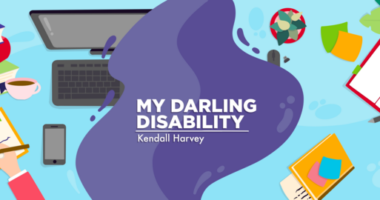The January to-do list includes financial planning for life with FA
An investment account for people with disabilities helps offer security

It’s January, and despite the gray skies overhead and the lingering chill in the air, I feel a little more motivated to tackle the mundane tasks left on my to-do list. I’m starting with a thorough check of the batteries in our smoke and carbon monoxide detectors on each level of our home and moving on to address the expired condiments in my refrigerator door. I’m not sure where all the different types of mustard came from, but apparently, we like variety!
I also carve out time in January to assess the financial health of our family, a process that looks different since our youngest daughter, Amelia, was diagnosed with Friedreich’s ataxia (FA) at age 8. Some of the nuts and bolts of what I do remain the same, such as pulling my credit reports from the three major credit bureaus to ensure they’re accurate. Other things have changed, including thinking through our allocations to Amelia’s Achieving a Better Life Experience (ABLE) account.
When our girls were born, investing in their college savings accounts was a no-brainer. I’m a no-frills kind of investor, so I opened 529 accounts directly with our home state program by the time they were each 3 months old. These accounts are part of Section 529 of the Internal Revenue Code, which allows tax advantages for this type of investment. I sock away a small amount every month, which is then amplified by compound interest. Over the years, it’ll grow to meet our expected educational expenses.
Less obvious to me was that I needed to look at saving for Amelia’s FA in much the same way.
ABLE accounts
This same 529 section of the tax code that allows for education planning also provides tax advantages for savings programs used to support eligible people with disabilities. That’s called 529A or an ABLE account.
Using this investment vehicle to help support Amelia’s care was a little less obvious to me than the college savings account, in part because it came with an emotional heaviness: While investing in a college fund allows a parent to dream about their child’s future, an ABLE account means I’m investing in resources to address future struggles. It’s no wonder I delayed opening this account until this past year.
Once I moved past the emotional hurdles, opening the ABLE account through our state program was easy. With all of Amelia’s documentation at the ready, we had the account up and running within 20 minutes. I even had a quick response code, commonly known as a QR code, that could be used to share with others who wanted to help support Amelia’s care.
Why would I want to do this? Because asking people for financial support during challenges isn’t easy, even if the support is offered and the resources are available. When someone wants to allocate money for this account when we’re not in a crisis, tax advantages will further empower Amelia and us to access funds as needed for any approved expenses.
What’s the purpose of an ABLE account? To quote the Internal Revenue Service, these funds can cover “housing, education, transportation, health, prevention and wellness, employment training and support, assistive technology and personal support services.” That’s a wide breadth of qualifying expenses, and for us FA caregivers, we know that a lot of needs can arise.
For my friend Jean Walsh, who has FA herself and is another Bionews columnist, her ABLE account is something she’ll rely on in the event her service dog, Wendy, has an emergency.
I’m still finding my footing in the shifts that have occurred in my life since Amelia’s FA diagnosis, but I’m starting to feel a bit more solid. Having an ABLE account at the ready when we need help has been a part of that process.
Note: Friedreich’s Ataxia News is strictly a news and information website about the disease. It does not provide medical advice, diagnosis, or treatment. This content is not intended to be a substitute for professional medical advice, diagnosis, or treatment. Always seek the advice of your physician or another qualified health provider with any questions you may have regarding a medical condition. Never disregard professional medical advice or delay in seeking it because of something you have read on this website. The opinions expressed in this column are not those of Friedreich’s Ataxia News or its parent company, Bionews, and are intended to spark discussion about issues pertaining to Friedreich’s ataxia.







Leave a comment
Fill in the required fields to post. Your email address will not be published.